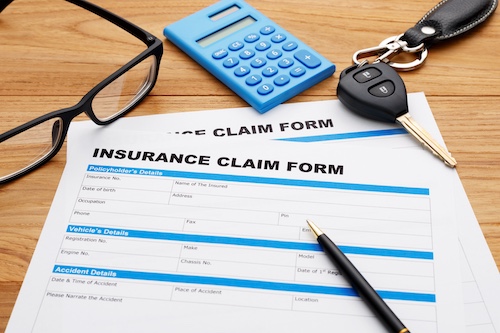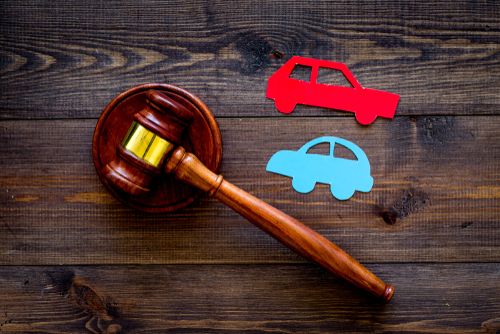Prove Fault in a Car Accident Case in North Carolina
At NC Car Accident Lawyers, we focus exclusively on helping injured drivers and passengers across North Carolina. Our team understands how difficult life becomes after a serious crash, and we work every day to prove fault in a car accident case and secure the compensation our clients deserve. We build each case with strong evidence, clear strategy, and direct communication, always putting our clients’ needs first. Whether through negotiation or legal action, our goal is simple: protect your rights and fight for the results you need to move forward.
Proving fault in a car accident case is the first and most important step for anyone injured in a crash in North Carolina. The state follows a strict contributory negligence rule, which means even a small amount of fault on the injured party can block recovery. Establishing fault requires strong evidence from the accident scene, police reports, witness statements, and medical records.
Insurance companies will often try to shift blame, making it vital to understand how fault is determined and how a North Carolina car accident lawyer can protect your rights.
Understanding Fault in a North Carolina Car Accident Case
Determining fault in a car accident case is the foundation of every car accident claim in North Carolina. The injured party must show clear evidence that the other driver’s negligence caused the collision.
Definition of Fault and Negligence
Fault in a car accident occurs when a driver fails to follow traffic laws or acts in a way a reasonable person would not. In North Carolina, negligence is tied to the duty every driver has to operate a vehicle safely. Under N.C. Gen. Stat. § 20-141, drivers must obey speed limits and adjust to road conditions. A negligent driver who ignores this duty may be held legally responsible for resulting injuries and property damage.
How Fault Is Determined
Fault is established through a review of critical evidence from the accident scene. Police reports often provide an officer’s opinion of what happened and may include details such as skid marks, damage patterns, or visible injuries. Insurance companies also rely on witness statements, traffic camera footage, and physical evidence from the vehicles involved. Together, these elements help determine if the other driver’s actions caused the crash.
Legal Responsibility Versus Insurance Liability
In North Carolina, legal responsibility and insurance liability are not always the same. A court may find the at fault driver legally responsible under state traffic laws, while insurance companies may dispute or attempt to shift blame. This is why having strong evidence and the support of an experienced North Carolina car accident lawyer is important in proving negligence.
Critical Evidence to Establish Fault
Strong evidence is the key to prove fault in a car accident case and to support a car accident claim in North Carolina. Each piece of evidence helps show how the accident happened and who should be held legally responsible.
Police Reports
A police report is often the first document reviewed after an accident occurred. Police officers record details about the accident scene, the vehicles involved, and the officer’s opinion about the at fault driver. While not final proof, these reports carry weight with insurance companies and courts.
Accident Scene Evidence
The accident scene provides physical evidence that helps establish fault. Skid marks, damage patterns on the vehicles, and road conditions give insight into how the crash unfolded. Traffic cameras and red light footage may also confirm the other driver’s actions when the collision occurred.
Witness Statements
Eyewitness statements are valuable in a car accident case. People who saw the crash can describe the negligent driver’s actions, such as failing to stop at a stop sign or running into oncoming traffic. These statements often serve as undeniable proof when fault is disputed.
Medical and Property Damage Records
Visible injuries, medical bills, lost wages, and replacement costs for damaged vehicles strengthen a personal injury claim. These records show how the negligent driver’s actions caused financial responsibility for the injured party.
Accident Reconstruction Experts
In crashes with multiple parties involved or unclear fault, accident reconstruction may be necessary. Experts use evidence from the accident scene, including vehicle damage and skid marks, to recreate what happened. Their expert testimony can provide strong evidence when fault is challenged by insurance companies.
Common Scenarios Where Fault Is Easier to Prove
Some types of collisions make it easier to determine fault in a car accident case. These situations often involve clear violations of traffic laws or driver actions that leave little room for dispute.
Rear End Collisions
In most rear end collisions, the rear driver is considered negligent. Traffic laws require drivers to maintain a safe following distance, and failing to do so often results in visible damage patterns that match the sequence of impact. Unless the injured party made an abrupt or unsafe maneuver, the rear driver is usually held legally responsible.
Left Turn Accidents
When a driver makes a left turn into oncoming traffic, fault is often easier to establish. The law gives the driver traveling straight the right of way. If the turning driver causes a crash, insurance companies and courts generally view that driver’s negligence as the cause. Exceptions may occur if the other driver ran a red light or was speeding.
Clear Traffic Violations
Collisions caused by traffic violations such as running a stop sign, failing to yield, or reckless driving are strong evidence of fault. These violations directly show that the driver failed to follow traffic laws and that their actions caused the accident.
How Insurance Companies Assess Fault
Insurance companies play a major role in how fault is determined after a car accident. Their evaluation often decides whether the injured party receives fair compensation or faces blame for the collision.
Review of Police Reports
Adjusters begin with the police report. They consider the officer’s opinion about what happened, the description of the accident scene, and details about the vehicles involved. While the officer’s opinion is not final, it often shapes how fault is assigned.
Use of Witness Statements and Evidence
Insurance companies rely on witness statements, traffic camera footage, and photographs of vehicle damage. They study skid marks, road conditions, and visible injuries to confirm the other driver’s actions. This evidence helps them decide if the negligent driver should be held legally responsible.
Efforts to Shift Blame
Insurance companies often try to shift blame to reduce their financial responsibility. They may argue that the injured party shared fault or failed to follow traffic laws. In North Carolina, even slight fault can block recovery under contributory negligence rules, which makes these disputes critical.
Role of a North Carolina Car Accident Lawyer
A North Carolina car accident attorney can challenge unfair determinations by insurance companies. An experienced lawyer gathers strong evidence, uses expert testimony, and pushes back when insurers attempt to deny a valid personal injury claim. This step is often necessary to secure fair compensation for medical bills, lost wages, and property damage.
Legal Standards and Burden of Proof in North Carolina
To prove fault in a car accident case, the injured party must meet strict legal standards set by North Carolina law. These standards define how fault is established and what evidence is required to hold the negligent driver responsible.
Burden of Proof on the Injured Party
The plaintiff in a car accident claim carries the burden of proof under N.C. Gen. Stat. § 1-139. This means the injured party must present strong evidence that the other driver’s negligence directly caused the collision and resulting injuries. Without undeniable proof, the claim may fail.
Preponderance of the Evidence
North Carolina courts require proof by a preponderance of the evidence. This standard means showing that it is more likely than not that the other driver’s actions caused the crash. Evidence such as police reports, eyewitness statements, medical bills, and vehicle damage helps meet this requirement.
Contributory Negligence Rule
North Carolina follows the contributory negligence doctrine. If the injured party is found even 1 percent at fault for the accident, they may be barred from recovering compensation. This strict rule makes it critical to establish fault clearly and to defend against claims of shared negligence.
Application of Traffic Laws
Traffic laws also guide fault determinations. For example, N.C. Gen. Stat. § 20-146 requires drivers to stay in their lane and operate safely. When a driver violates such laws, it strengthens the case that they acted negligently and should be held legally responsible.
Contact an Experienced North Carolina Car Accident Attorney Today!
If you were injured in a crash and need to prove fault in a car accident case, our team at NC Car Accident Lawyers is ready to help. We understand how insurance companies work to shift blame and how even a small mistake can cost you fair compensation under North Carolina’s contributory negligence rule. Our attorneys know how to gather strong evidence, from police reports and traffic camera footage to eyewitness statements and expert testimony.
Contact us at 864-561-6247 for a free case review today!







